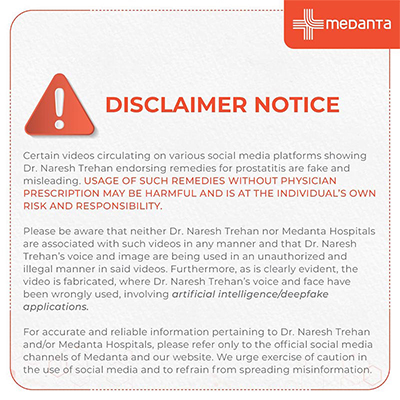Breast Ultrasound: What It Is, Purpose, Procedure & Results

Introduction: Taking Charge of Your Breast Health
Breast health is an important part of a woman’s overall well-being, yet many women neglect regular screenings until they experience symptoms. While mammograms are the most commonly known imaging tests for breast health in women above 40 years, breast ultrasounds play a crucial role in detecting and diagnosing breast conditions, especially in younger women or those with dense breast tissue.
If you’ve ever wondered whether you need a breast ultrasound, this article will help you understand its benefits, when it’s recommended, and how it can be a lifesaving tool in detecting breast abnormalities early.
What is a Breast Ultrasound?
A breast ultrasound is a non-invasive imaging test that uses high-frequency sound waves to create detailed images of the breast tissue. Unlike mammograms, which use X-rays, ultrasounds do not involve radiation, making them a safer option for frequent use when necessary.
Breast ultrasounds are particularly helpful in:
Differentiating between solid lumps and fluid-filled cysts
Examining dense breast tissue, where mammograms may not be as effective
Guiding biopsies when further investigation is needed
Monitoring changes in known breast conditions
Who Needs a Breast Ultrasound?
While routine mammograms are recommended for women above 40, ultrasounds are often suggested in specific cases, including:
1. Women with Dense Breast Tissue
Younger women (under 40) and some older women naturally have dense breast tissue, which can make it difficult for a mammogram to detect abnormalities. Since dense tissue and tumors both appear white on a mammogram, an ultrasound provides a clearer image and helps distinguish between normal and abnormal findings.
2. Evaluating Lumps Found During a Physical Exam or Mammogram
If you or your doctor feel a lump in your breast, or if a mammogram detects an abnormal area, an ultrasound helps determine if it’s a cyst (fluid-filled) or a solid mass. This information is crucial because cysts are usually benign, while solid lumps may require further testing.
3. Breast Pain or Nipple Discharge
Unexplained breast pain, swelling, or nipple discharge can be signs of an underlying issue. A breast ultrasound can help determine the cause, whether it’s a cyst, an infection, or a benign or cancerous mass.
4. Pregnant or Breastfeeding Women
Since mammograms involve radiation, they are generally avoided during pregnancy and breastfeeding. If a lump or abnormality is found, an ultrasound is the preferred imaging method as it is safe for both mother and baby.
5. Women at High Risk of Breast Cancer
If you have a family history of breast cancer or carry the BRCA1 or BRCA2 gene, you may need additional screenings besides mammograms. Breast ultrasounds and MRIs are often used together to monitor high-risk individuals.
6. Guiding a Breast Biopsy
If a suspicious lump is detected, a biopsy (removal of a small tissue sample) may be required. A breast ultrasound is used to guide the needle precisely to the right spot, ensuring accurate diagnosis with minimal discomfort.
Breast Ultrasound vs. Mammogram: What’s the Difference?
Many women wonder whether they need both tests or if an ultrasound alone is enough. Here’s a comparison:
Feature | Breast Ultrasound | Mammogram |
|---|---|---|
Radiation-Free | ✅ Yes | ❌ No (uses X-rays) |
Best for Dense Breasts | ✅ Yes | ❌ No (can miss abnormalities) |
Can Detect Cysts vs. Solid Lumps | ✅ Yes | ❌ No (may require further tests) |
Guides Biopsy Procedures | ✅ Yes | ❌ No |
First-Line Screening for Women Over 40 | ❌ No | ✅ Yes |
Safe for Pregnant/Breastfeeding Women | ✅ Yes | ❌ No |
Mammograms remain the gold standard for detecting early-stage breast cancer, but ultrasounds provide additional clarity when needed. In many cases, doctors use both tests together for a more accurate diagnosis.
What Happens During a Breast Ultrasound?
The procedure is simple, painless, and takes about 15-30 minutes. Here’s what you can expect:
Preparation: You will be asked to remove your top and wear a gown. No special preparation is needed.
Applying Gel: A water-based gel is applied to the breast to help transmit sound waves.
Imaging Process: A small handheld device (transducer) is moved over the breast, capturing real-time images on a screen.
Results: The radiologist analyzes the images and shares the findings with your doctor. If necessary, additional tests may be recommended. Ultrasounds are use dependent and there may be slight variation amongst two reports.
Are Breast Ultrasounds Safe?
Yes! Since ultrasounds use sound waves instead of radiation, they are completely safe for all women, including pregnant and breastfeeding mothers. There are no side effects, and the test can be repeated as needed.
When Should You Get a Breast Ultrasound?
You should consider a breast ultrasound if you:
✔ Notice a new lump or change in breast texture
✔ Have breast pain or unusual nipple discharge
✔ Have dense breast tissue that makes mammograms difficult to interpret
✔ Are pregnant or breastfeeding and need breast imaging
✔ Have a family history of breast cancer and need additional screenings
Early Detection Saves Lives
Breast cancer is one of the most common cancers in women, but when detected early, it is highly treatable. Regular screenings, including mammograms and ultrasounds when necessary, increase the chances of finding abnormalities before they become serious.
Take Control of Your Breast Health
Many women delay breast screenings out of fear or uncertainty, but knowledge is power. If you notice any breast changes or have a higher risk due to family history, talk to your doctor about whether a breast ultrasound is right for you.
Your health is in your hands—don’t wait for symptoms to worsen. Schedule your breast ultrasound today and take a proactive step toward lifelong wellness.






